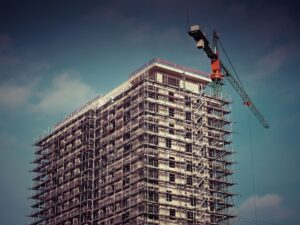A Residents’ Association or Tenants’ Association (RTA) is a group of Leaseholders / tenants who have decided to band together as a means of shared representation on behalf of the leaseholders and residents within a development.
An RTA can represent the shared wishes of a community, street, or cluster of housing to their landlord or property manager (as well as the council) in a way that is much harder to ignore. Here are some examples of why they might form, as well as what they can achieve.
Why Start a Residents’ Association?
- Campaigning for leasehold improvements, such as repairs and more functional amenities.
- Pushing for something positive in the area, e.g. a new playground for local children.
- To become a regular point of contact for the landlord and/or property manager, influencing major decisions that will affect the tenants.
- To gain access to the costs borne by the service charge, ensuring fairness and transparency.
- To provide a forum to settle disputes between residents.
- To build a stronger community spirit, as well as less adversarial relationships with landlords.
- To oppose undesirable planning proposals by the landlord and property developers.
There are many reasons that a group of residents would want to start an RTA, ranging from the protections of leaseholder’s rights to positive community programs. Some of the most common reasons include:
Clearly, there are a number of legitimate reasons that one might have for starting a Residents’ Association, but even if you agree with all this reasoning, you may not know where to start. Let’s take a look at the proper way to start an RA.
How to Form a Residents’ Association
Forming an RTA may sound easy, but ensuring that the formation is properly organised with all members on the same page can be a real challenge. For one, there are a number of steps that you need to take before your RTA can become truly effective. Here’s a step-by-step guide to doing it the right way:
Determine the necessity:
Whilst it may seem a bit obvious, its importance cannot be understated. A RTA can be a powerful voice for the community, ensuring that the local quality of life is kept to an acceptable standard. But before you go forming one, consider the necessity:
- Does everyone in the area get along with the landlord as is?
- Are people generally happy with their living situation?
- Does the landlord have a good reputation for honesty and fairness?
If the answer to all of these questions is yes, then a RTA may not actually be necessary. Talk to your neighbours, figure out what the prevailing opinion is, then plan your next move accordingly.
Plan a private meeting:
Before you open your RTA to any and every leaseholder, start by finding a small group of likeminded leaseholders to discuss your thoughts – around 5-6 people should do depending on the size of your development. Coming together and sharing your ideas is the perfect way to start the association, as it allows you to set an agenda early on and get everyone on the same page. Then comes time to open the group to the public.
Meeting / official set up
After you have built your starter group, it’s time to open the conversation up to the wider community. Consider leaving flyers at reception or on notice boards in the common areas to invite people to take part in an open meeting. When those who RSVP arrive, it is time to get down to business.
Electing an Executive Committee for the association is a good step, as well as naming the group, deciding when regular meetings will take place, setting up a constitution for involvement, and determining what the group’s shared objectives are.
Follow these steps and you will be well on the way to running your own RTA. However, to operate as effectively and bring about real change, your association needs to be recognised by your landlord and/or property manager. Here’s how to make that happen.
Recognition as a Residents’ Association
This step is essential to ensure your previous efforts were not in vain. One of the most basic requirements of an RTA is having strong membership numbers, with membership not being lower than 60% of those eligible to join being a part of the Association.
An application must be delivered to the landlord with a signed list of members, and he can return that application to your association’s secretary with his verdict. If the landlord denies your application, you can make an application to the Tribunal to attempt to gain recognition under statute law.
There are a few requirements that should be adhered to for your Residents’ Association to officially gain recognition, these are:
- The rules of the association should be fair and democratic for all.
- Membership shouldn’t fall below 60% of those eligible to join.
- Members must be paying a variable service charge to their landlord.
- Tenants paying fixed rents/service charges will not qualify for membership (but they could be involved in the process informally).
- Only one vote per home will be permitted in decision making processes.
- No more than one association per block will be recognised, unless there are several blocks on the development
Should you receive a certificate of recognition, this will be for a set period of time, whether this is formally through the tribunal or directly through the Landlord so it is best to be aware of the period from the outset.
So What Next?
If you are interested in starting a Residents’ Association, get out there and find your members! It’s not going to start itself, and if you think it could do some good in your area, it can be great for your development.
For more interesting information on property management, and tenant’s rights, check out the other articles on our blog, or get in touch with Strangford Management today!
Read more…
- EWS1 Form Explained: Hidden Requirements Your Surveyor Won’t Tell You
- NHBC Cover Explained: Your Essential Guide for Leaseholders (2025)
- Ministers Set £30bn Cladding Crisis Deadline for 2029
- Service Charge Disputes Made Simple: Your Rights as a Leaseholder
- Breaking: Leasehold Reform Scraps Two-Year Wait Rule From January 2025




